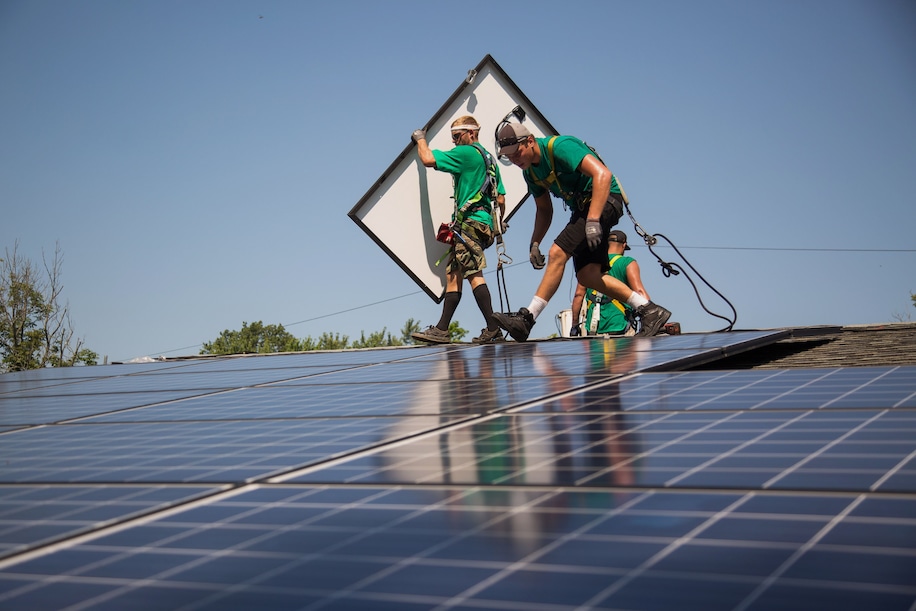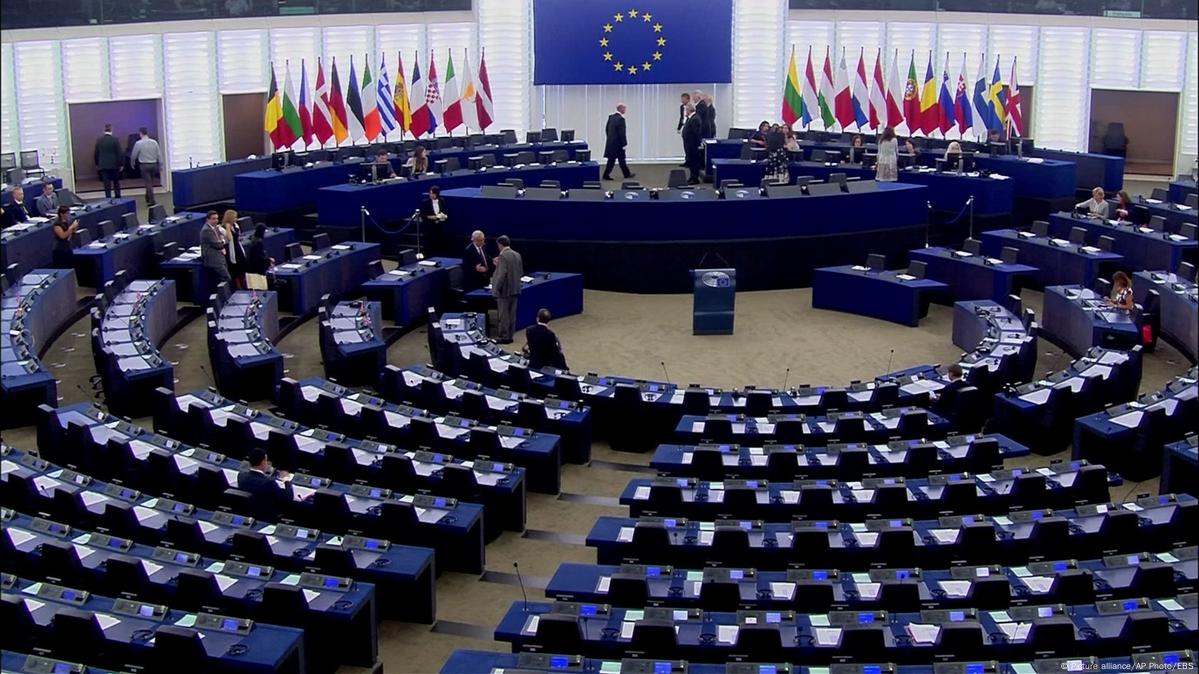New budget deal marks the biggest climate investment in U.S. history

The $555 billion focused on cutting carbon emissions includes tax credits for businesses and consumers, but omits a key plan targeting the U.S. power sector.
(Washington Post) – The White House’s Build Back Better plan unveiled Thursday represents the biggest clean-energy investment in U.S. history, with a $555 billion package of tax credits, grants and other policies aimed at curbing greenhouse gas emissions that are fueling climate change.
Although Sen. Joe Manchin III (D-W.Va.) forced Democrats to drop a key provision targeting the electric power sector, the final bill includes an array of tax credits for companies and consumers that will make it easier to buy electric vehicles, install solar panels, retrofit buildings and manufacture wind turbines and other clean-energy equipment in the United States.
The climate package comes at a time when President Biden is hoping to demonstrate at a high-profile United Nations summit next week that the United States can meet its international climate commitments. The legislation, coupled with executive actions, could help Biden halve U.S. greenhouse gas emissions in less than nine years compared with 2005 levels.
“This is game-changing,” said Carol Browner, who served as President Barack Obama’s top climate adviser during the start of his administration and headed the Environmental Protection Agency under President Bill Clinton.
Comparing it to the 2009 stimulus bill that funneled billions of dollars to clean energy, Browner said, “This is six times the amount of Obama’s investment, and we thought that was big.”
Republican lawmakers, however, said it would make it harder for the United States to take advantage of its abundant supply of fossil fuels. During a House Committee on Oversight and Reform hearing Thursday, where Democrats grilled oil executives over their past efforts to play down the effect of climate change, Rep. Andy Biggs (R-Ariz.) specifically targeted the new tax-and-spending bill.
“The president and his allies in Congress have consistently advocated for policies that have led to higher energy prices and increased inflation,” Biggs said.
The new Democratic plan, however, underscores how much has shifted since Obama chose to prioritize economic and health-care legislation over a climate bill a decade ago. This year, as wildfires and floods have hammered the country amid scientific warnings that the world must slash its carbon emissions by the end of the decade, Biden and his fellow Democrats have made clean energy central to their economic agenda.
“Climate in 2020 became an electoral powerhouse,” said Sen. Edward J. Markey (D-Mass.), who co-sponsored a cap-and-trade bill that passed the House in 2009 but stalled in the Senate. “That army of the Sunrise Movement, the youth climate strikers, they have proven that if you organize around clean energy, around climate issues, you can change the inside dynamic of the back rooms of Washington.”
Documents from the White House and analyses by independent experts suggest the legislation will reduce U.S. annual carbon dioxide emissions by about a gigaton, nearly a sixth of its current annual emissions.
Markey said he now believes that tax credits would “supercharge the renewable revolution” and work in concert with new regulations the administration plans to adopt.
“Standards are more permanent, more popular, and provide more certainty that going forward we will get dangerous emissions down to where they need to be to protect every community, especially environmental justice communities,” he said, referring to areas with a higher share of low-income Americans and people of color.
Environmentalists and liberals pushed unsuccessfully in the bill for a plan known as the Clean Energy Performance Program, which would reward power companies that increased their share of renewables by 4 percent a year and penalize those that didn’t. But Fred Krupp, president of the Environmental Defense Fund, said that provision was not essential.
“From my perspective, the most important thing survived, because the engine of this bill from the beginning has been tax credits,” Krupp said.
Those tax credits will work differently from past efforts to put a price on carbon. With many politicians remain skittish about raising the cost of energy, the Biden approach will make clean energy cheaper through tax credits rather than imposing taxes on fossil fuels.
Democrats were still negotiating Thursday over whether to include a fee on methane, a potent greenhouse gas, in the legislation. The provision made it into the House version of the bill, and Sen. Debbie Stabenow (D-Mich.) said in an interview, “I expect it to be in the Senate version as well.”
Many oil and gas firms oppose the idea, noting that the EPA is about to propose a rule that will limit methane emissions from their operations. The American Petroleum Institute’s senior vice president for regulatory affairs, Frank Macchiarola, said in an email that “we’re reviewing the legislative text” and would work with both parties.
The tax credits would help a wide variety of people, said Princeton University professor Jesse Jenkins, and would fix some of the flaws of previous credits.
The new ones would be refundable, so that poorer Americans can get money back from the Treasury, and also last longer, making long-term planning easier for industry. Companies also would not face the same limits they did in the past. Currently, electric-vehicle manufacturers lose their credits once they have sold a relatively modest number of vehicles, Jenkins said, essentially penalizing them for success.
The White House said that the new bill would cut the cost of installing solar on a residential rooftop by about 30 percent, shortening the payback period by about five years.
The electric-vehicle tax credit would lower the cost of an electric vehicle that is made in America with domestic materials and union labor by $12,500 for a middle-class family — while being phased out for wealthier households. And the credit can be claimed by manufacturers, so people without large savings can immediately get the lower price at the dealership rather than waiting until tax season.
Michele Roberts, national co-coordinator at the Environmental Justice Health Alliance, lauded the proposal as a major win for communities of color that have been disproportionately harmed by pollution from fossil fuel infrastructure. The bill includes money for cleaning up Superfund sites, electrifying transit systems to improve air quality, and directing clean energy jobs toward low-income communities.
In addition, the legislation would help rural communities tap into targeted grants and loans through the Department of Agriculture. It would create a Clean Energy and Sustainability Accelerator, essentially a green bank for lending money, 40 percent of which would go to “disadvantaged communities,” the administration’s framework said.
Biden is also planning to use the legislation to create a Civilian Climate Corps to hire 300,000 young people to restore forests and wetlands and guard against the effects of rising temperatures.
But many young climate activists are still not satisfied.
While Biden revealed his plan to lawmakers Thursday morning, five young people in wheelchairs sat outside the Capitol, waiting to hear what he proposed.
Kidus Girma, Abby Leedy, Paul Campion, Ema Govea and Julie Paramo were on the ninth day of a hunger strike. Their expressions were glassy-eyed and weary, their limbs weak, their blood sugar so low they could not stand without feeling faint. The protesters, who range in age from 18 to 26, have said they will not eat until Biden and congressional Democrats pass the climate policies they promised when they were elected.
The president’s framework was not what they were looking for.
“I think there’s been a lot of conversations about being realistic, or, ‘What can we get through Congress?’ And there hasn’t been enough conversation about, ‘What do we fundamentally need as human beings?’ ” said Girma, 26.
“This isn’t just a political conversation about a bill on the Hill,” he added. “This is a moral conversation about whether or not billions of people get to live in a dramatically better world, or if we go down a dramatically difficult path climate-wise.”
Mohamed Adow, director of Nairobi-based think tank PowerShift Africa, is peering down that path. He called the U.S. spending plan “a positive start.” But he said Biden still has a “black mark on his record” for his failure to ensure that rich nations fulfill their pledge to help vulnerable countries phase out fossil fuels and adapt to climate change.
Although Biden said he would double U.S. climate finance contributions in September, the developed world won’t meet its full commitment of $100 billion annually until 2023 — three years later than originally promised, Adow said.
Still, U.S. allies in the battle against global warming said that outlining a framework for climate legislation ahead of the U.N. climate conference starting Sunday in Glasgow, Scotland, will make it easier to get developing countries to make ambitious commitments of their own.
The plan in Congress “allows us to break the deadlock in which the Biden administration was in danger of finding itself,” said Pascal Canfin, a French lawmaker who is the head of the environment committee of the European Parliament. “Not having an investment plan would have had a negative impact on the credibility of the U.S. commitment. I hope that this risk will be behind us.”
Biden’s special envoy on climate, John F. Kerry, said in a phone interview that nations attending the Glasgow conference would understand how significant it would be for Biden to show up without his climate priorities funded.
“I think people have respect for our congressional process. And the Congress has clear prerogatives,” Kerry said. “We’re doing everything we possibly can to move the process forward as fast as we can. And some countries, I regret to say, have yet to really seize this with all the energy and capacity that they could.”
Leah Stokes, a political scientist at the University of California at Santa Barbara and a senior policy adviser to the advocacy group Evergreen Action, said that even if these policies are enacted they will not be enough to avert a significant global temperature rise.
“We can celebrate the massive achievement, if it passes, but it will not be the end of the story,” she said. “Unfortunately, climate change is an issue of math. And the math says we have to continue to cut carbon pollution.”
Maxine Joselow, Michael Birnbaum and Brady Dennis contributed to this report.













